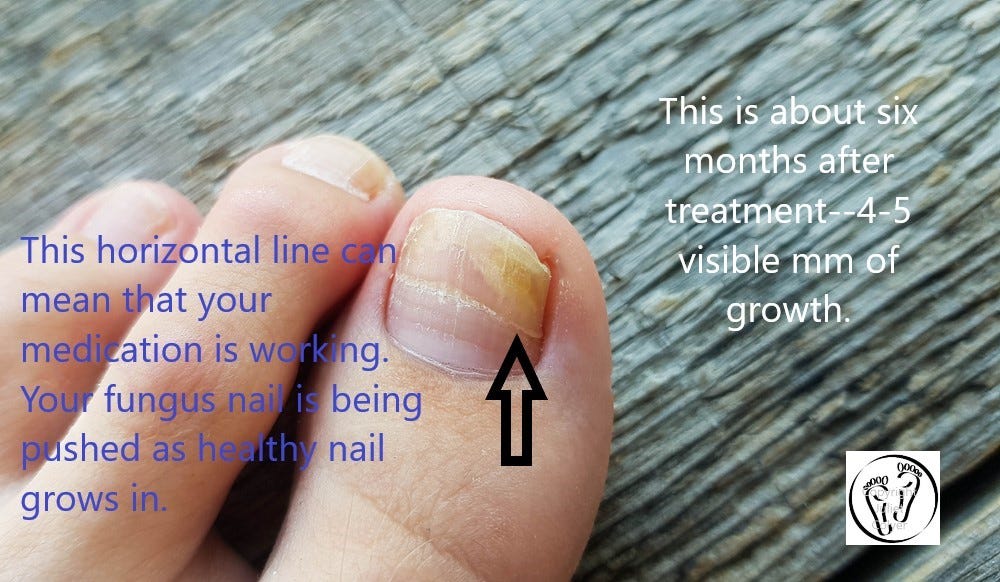How Can I Medically Treat Toenail Fungus?
Toenail Fungus Part 4
As I mentioned in Part 2 in this series, you can treat the symptoms of toenail fungus without treating the actual infection of the nail. Many people choose to treat only the symptoms because they have failed oral medications, failed topical medications, and they have learned that toenail fungus does not typically pose a health risk except to increase your risk for ingrown toenails and/or pain due to the bulk and shape of the nail.
To repeat, there is little health risk to having toenail fungus beyond local pain and skin infections. So why do we treat it? People get self-conscious about the look of their toenails. And because we do have oral medications that are about 70% effective. That’s not a bad number. It means only 30% of people don’t improve with the first line medication, terbinafine.
Typically, I start with a trial of terbinafine. Terbinafine is not for you if you have underlying liver disorder (hepatitis, fatty liver, cirrhosis—to name a few) or if you are taking medications that don’t mix well with terbinafine. When I started practicing podiatry, this medication treatment course could cost around $2000. Now you can usually get it generic terbinafine for closer to $20 for the whole treatment course. If you meet the guidelines, consider giving it a try. I don’t recommend doing expensive nail fungus testing unless you fail to show improvement in your toenail after about six months of treatment. Six months of treatment would look like about four millimeters of healthy nail pushing out the thick nail toward the end of your toe—like this:
I prescribe terbinafine daily for a month, followed by a month OFF the medication, followed by a month back on. This way of prescribing is safer for your liver AND I have seen a study showing it is AS effective as using terbinafine for three months straight. Your pharmacist should check for medication interactions and your prescribing physician should order baseline liver function tests. Always fill your medications with the same pharmacy, if possible, so they can alert you to potential drug-drug interactions.
Even with medication, if your feet are consistently in warm, moist, dark environments, be prepared for the fungus to grow back. Fungus loves to grow in warm, dark, moist spaces. This is why I recommend shoes with MESH, and wearing light colored shoes and socks if you have issues with skin or nail fungus. Here is an example of a light colored, mesh shoe. Light grey would also be a good choice.
As I mentioned in my original fungus episode, Oh My Fungus, you ALSO want to continually treat musty smelling shoes and insoles by setting them out in direct sunlight for a few hours (until they stop smelling musty). Sunlight contains UV light which kills fungus naturally.
If these steps don’t cure your fungus and keep it from returning, ask your podiatrist for other options. There are other medications and laser treatments available. I personally have absolutely no experience with laser treatments so I will not comment on them. This post is about the practical ways to start treating your fungus, not the expensive or advanced ones. As always, I am not your doctor. I did not examine you and do not know your underlying medical risks and conditions. Please see your local podiatrist for an evaluation and to begin medical treatment of your fungus if you choose. Thank you for being curious!
Dr. C.



